Monday Morning Update 2/1/21
Top News
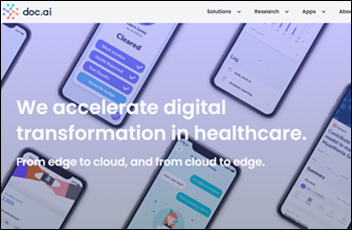
Digital health company Sharecare acquires AI solutions vendor Doc.ai. Terms were not disclosed.
Doc.ai had raised $41 million in two seed funding rounds.
Reports from late last week indicated that the deal was underway and that the combined companies will be taken public via a SPAC transaction at a valuation of $4 billion.
Reader Comments
From Library Carrel: “Re: IMedX. The national provider of medical transcription services to hundreds of hospitals had a malware / ransomware attack bring down the entire IMedX Express platform. Hospitals have been down since Monday 1/25 with no projected resolution.” IMedX’s rarely used Twitter account and its webpage do not mention the outage, but BJC’s most recent update at this writing says that IMedX remains down, although it says it’s working with “a vendor” to resolve an IMEdX problem. I’ve seen no mention anywhere else, so I can’t say if this is just a BJC problem or if the issue is IMedX’s problem. I messaged IMedX via their client support contact form Saturday afternoon, but haven’t heard back. IMedX has a lot of customers, so I would be surprised if it’s a national outage that nobody has mentioned on Twitter or websites, which would then suggest that it’s something specific to BJC.
From Cron Job: “Re: Olive. You don’t usually take on a vendor unless their is snake oil involved. What gives with this firm? Of course the EHR vendors would be more than happy if we didn’t use this or any other AI tool since they will have a product ‘soon.’” I have made no comments about Olive, although I have run some that readers submitted. I don’t have an opinion on Olive, other than it’s interesting that they sold check-in kiosks and patient matching solutions under their previous name CrossChx through 2018, then sold that business off to focus on an abandoned internal project that used screen-scraping and macros, with the renamed company claiming to offer “the Internet of healthcare” that will eliminate $1 trillion of healthcare costs. It’s up to the customer to figure out if it offers more than just the usual scripting tool to control other applications and whether it provides ROI. KLAS did an emerging technology profile on the company in September 2019, which I don’t remember reading, so it would be interesting to see how they stack it up against RPA competitors and how customers feel it’s working for them.
From J U Stice: “Re: Darena Solutions. Their so-called free promotion for BlueButtonPro is not really free. They are waiving implementation and subscription fees until 12/31/22. How about a little transparency?” Their FAQ is pretty clear on the terms and it is indeed free, just for a limited period (but nearly two years is a long time in free health IT land). They are gambling that customers who have gone to the trouble to implement their solution will find it worth keeping once the free period runs out, not the first vendor to make that offer.
From Hidden: “Re: HIMSS21 call for speakers. Closed months ago. Looks like you are confusing the open call for proposals for the extra-cost pre-conference symposia.” You are correct, thanks. The HIMSS21 website contains a “Call for Proposals” menu item under “Program,” but that is indeed is for just topic-specific, extra-cost symposia and forums. The general call was open from early October until early November, and those links now jump to the optional events call for proposals.
From Booth Carpet Eye Watering: “Re: HIMSS21. I haven’t heard of some of the companies that are featured exhibitors.” Me neither. We all know Athenahealth, BD, Epic, InterSystems, and possibly Updox, but the names Bravado Health, Podium, Surgical Directions, and Tegria are new to me. I also noticed that Cerner, Meditech, Allscripts, McKesson, IBM, and Microsoft aren’t on the exhibitor list when checking booth locations for the biggest companies.
From Lissome Waif: “Re: Baylor Scott & White. Some of the contractors the employees will be moving to are Atos, Citius Tech, and Health Catalyst.” Unverified.
From SPACMan: “Re: SPACs. With the SPAC craze picking up steam, when will HIStalk get itself acquired by one?” I’m picturing “The Unincorporated Man” science fiction novel that I haven’t actually read, in which every citizen is incorporated at birth with shares sold on the open market (maybe to pay their exorbitant L&D hospital bill), after which the person spends their life trying to finance a share buy-back to gain their emancipation from their owners. I am money-unmotivated and would rebel at creative oversight, so HIStalk will one day have an initially puzzling, then concerning home page that isn’t changing, at which point you will know that I have lost interest or died. Maybe it’s not the most amazing art, but it’s my art, and it will stay that way.
HIStalk Announcements and Requests
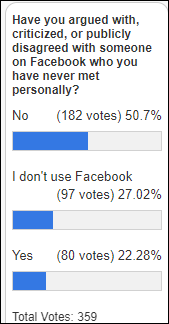
About 30% of the three-fourths of poll respondents who use Facebook have debated strangers on Facebook. Rob made a brilliant, pithy observation: “Pseudo-anonymous commenting systems offer the closest thing to public critique of mainstream viewpoints. Just because a great percentage of it it sounds Neanderthal-like does not mean it is bad — it just means you are noticing how dumb most people are for the first time.” I frequently wonder if Facebook users are representative of the percentage of people in real life who are angry, uninformed, or not terribly bright in general. I hold hope, without any evidence, that maybe Facebook just attracts and overrepresents people who have a lot of free time for reasons that appear obvious from their profiles.
New poll to your right or here: Which advance directive documents could your family or friends quickly find if you became medically unresponsive? The process takes quite a few steps: creating the documents, storing them somewhere accessible, making sure the people who will be watching over your care know that they exist and where to find them, and making sure those documents find their way to the hospital and chart. The next step is out of your hands – hoping staff remember don’t do something you don’t want, either from lack of coordination or their insistence on going all-in medically no matter the papers say.

I can’t claim that the results of my HIMSS21 poll are statistically valid given small sample size and unvetted respondents, but for what it’s worth if anything since a reader asked me to run it, it’s nearly an even split among vendors who registered to exhibit at HIMSS20 who plan to have a booth at HIMSS21. Nearly two-thirds of individual HIMSS20 registrants say they won’t attend HIMSS21. The big challenge is that COVID is eating up the clock and available bandwidth and we just don’t know if conferences will return to their longstanding status as must-see TV. The folks who liked HIMSS conferences when crowds were thin, booths were modest, and the after-hours social calendar wasn’t 10-deep with events may see the unlikely return to what it used to be.

Lorre wants me to tell you that she has a rare opening for the Top Spot Banner ad at the top of every HIStalk page. The previous occupant drew a few thousand clicks over a many-month run and the satisfaction of seeing their name first every time they read the site. Contact Lorre.
Welcome to new HIStalk Platinum Sponsor Ascom. The Morrisville, NC-based company – part of the global Ascom — is a communication solutions provider that focuses on mobile workflow to close digital information gaps to support making the best possible decisions. Hospital solutions to overcome poor communication include mobile workflow; noise reduction from device alerts; location services for finding staff, equipment, or patients; and staff security. Its Telligence system can function as a standalone nurse call system or a fully integrated, end-to-end patient response system that can provide access to key clinical content and capture information at the bedside, while TelliConnect Station supports automated staff check-in, efficient clinical workflows, quick charting, and medical device integration. The enterprise-grade, Android-powered Ascom Myco 3 smartphone is designed for healthcare professionals, equipped with a 5-inch Corning Gorilla Glass 3 display, noise and echo cancellation, barcode scanner, LED beacon, and a true hot-swap battery. Its Telecare IP supports senior living communities with caregiver contact, monitored active or passive check-ins, resident profiles, bed sensor integration, a help button, and wander management sensors that can automatically lock doors. Managing Director Kelly Feist, MBA is an industry long-timer who has held executive roles with Siemens, Eclipsys, Sunquest, and Philips. Thanks to Ascom for supporting HIStalk.
I found this brand new Ascom video on YouTube that provides an overview of how its solutions support a high-reliability ICU. It’s one of the most artistic, interesting product videos I’ve seen, a wordless model of “show, don’t tell” efficiency that says a lot in an entirely enjoyable 4.5 minutes.
Webinars
February 24 (Wednesday) 1 ET. “Maximizing the Value of Digital Initiatives with Enterprise Provider Data Management.” Sponsor: Phynd Technologies. Presenters: Tom White, founder and CEO, Phynd Technologies; Adam Cherrington, research director, KLAS Research. Health systems can derive great business value and competitive advantage by centrally managing their provider data. A clear roadmap and management solution can solve problems with fragmented data, workflows, and patient experiences and support operational efficiency and delivery of a remarkable patient experience. The presenters will describe common pitfalls in managing enterprise information and digital strategy in silos, how to align stakeholders to maximize the value of digital initiatives, and how leading health systems are using best-of-breed strategies to evolve provider data management.
Previous webinars are on our YouTube channel. Contact Lorre to present your own.
Acquisitions, Funding, Business, and Stock
I accidentally ran across last week’s earnings call transcript of Roper Technologies, whose healthcare holdings include Sunquest and Strata Decision. I was surprised that while Strata got a brief mention in the Friday call for its acquisition of EPSi, Sunquest wasn’t mentioned. That seems surprising since they used to talk about it quite a bit.
People

Mike Remmenga (CorroHealth) joins Central Logic as VP of client success.
Announcements and Implementations
Anthem launches Anthem Digital Incubator, which will help early-stage companies that are working on personalized healthcare apps. Participants will be able to use Anthem’s de-identified patient data to validate their technology. The Palo Alto-based organization will apparently report to VP of digital care delivery Kate Merton, who holds a PhD in pharmacology and toxicology and an MBA from Duke.
COVID-19
US case counts continued their sharp decline over the weekend. However, a new IHME forecast predicts that under the best-case scenario, another 200,000 Americans will die of COVID-19 in the next three months. The current death toll stands at 439,000.
CDC reports that 29.6 million COVID-19 vaccine doses have been administered of 50 million doses distributed (60%).
A CDC emergency order that takes effect Tuesday will require masks for passengers of airplanes, trains, subways, buses, taxis, and ride-shares. Transportation operators are assigned the responsibility of making passengers comply.
Former FDA Commissioner Scott Gottlieb, MD says that we now have three effective COVID-19 vaccines, including the Johnson & Johnson one that will be available soon, but FDA needs to streamline the regulatory process so that they can be updated quickly to address new variants, similar to software updates.
CDC’s $44 million, Deloitte-developed VAMS vaccination management system is being used by just nine states, even though it’s free to them, and one of those is moving away from it and another is looking for a replacement. Riverside Health System said it abandoned the system within a week of starting employee vaccination clinics because it was slow and prone to crashing, leading them to use Epic instead.
Massachusetts legislators call for the state to create a single vaccine registration portal and a 24/7 hotline that supports multiple languages. The current system requires looking up locations on a website, then clicking to external websites to sign up and search for appointments.
Florida will implement a statewide, ShareCare-powered vaccine appointment system in taking the program over from overwhelmed county public health departments. The state has also granted grocery story chain Publix – a donor to the governor’s political committee – exclusive rights to offer vaccinations in its pharmacies in some locations, raising concerns that the chain has few locations in poor areas. Florida’s surgeon general also issued an advisory that gives vaccination priority to state residents following a backlash from year-round residents who saw Northern tourists and visiting Canadians taking up all the available appointments.
New York City provides an example of the difficulty in ensuring vaccine equity. New York Presbyterian sets up a vaccination site in a Latino neighborhood, but white people traveled from other parts of the city and state and took most of the slots. A city councilman likens sign-up to “The Hunger Games,” where making an appointment requires a computer, Internet connectivity, and English speaking skills to navigate the required portal.

The mass vaccination site at LA’s Dodger Stadium shuts down for an hour when anti-vaccine protesters who organized a “scamdemic protest” block the entrance, extending the already hours-long wait to be vaccinated.
Sheriff’s deputies secure Legacy Salmon Creek Medical Center (WA) after anti-vaccine and COVID conspiracy theorists, some carrying weapons and gas masks, protest outside the ED that a 74-year-old woman inside was being medically kidnapped. She was being treated for a urinary tract infection and had asked to stay, but refused to be COVID tested or to wear a mask despite having a fever, so the hospital moved her to a quarantine area. Her daughter demanded to see her, refused to wear a mask, and then called 911 when she was not allowed in. A friend of the daughter live-streamed a call for supporters to overwhelm the sheriff’s office with calls demanding the woman’s discharge. Deputies pushed some protesters back out a door they had entered after it was opened to admit an unrelated person who was seeking care. The woman finally changed her mind and decided that she wanted to go home, so she was promptly discharged.
Sponsor Updates
- The Sharp Index, in partnership with Medicomp Systems honor Saykara and Vocera with Sharp Index Awards in the category of “Best Health Tech Company to Reduce Physician Burnout.”
- Arcadia announces that its healthcare customers have successfully begun nationwide, multilingual COVID-19 vaccination outreach campaigns using Arcadia’s analytics.
- Nuance will participate in the virtual SVB Leerink Annual Global Healthcare Conference February 25-26, and in the virtual Morgan Stanley Technology, Media and Telecommunications March 1.
- OptimizeRx names Nick Cassotis senior director of sales.
- Netsmart releases a new CareThreads Podcast, “How Electronic Visit Verification Impacts Providers.”
- CHIME names Nordic Chairman of the Board Bruce Cerullo a Healthcare Hero for his work during the COVID-19 pandemic.
- Redox releases a new podcast, “Reproduction & Pediatrics pt 3: Dama Dipayana Co-founder & CEO of Manatee.”
- Visage Imaging will sponsor the AI Hackathon during the virtual SIO 2021 February 5.
Blog Posts
- Top Insights for EHR Go-Live Success in a Virtual World (Nuance)
- Near, far, [project] manage wherever you are (Nordic)
- 3 Ways to Grow Patient Volume in 2021 (PatientBond)
- Staff Augmentation Versus Managed Services. It’s Not an Either/Or Decision. (Pivot Point Consulting)
- A Pandemic Pregnancy: Pros, Cons, and Preparedness (PMD)
- The Secrets of Direct Sourcing Success (Premier)
- How to Architect Products for EHR Integration to Support Clinical Workflows (Redox)
- Close the Gaps in Your Prescription Price Transparency Strategy (RxRevu)
- Is your company properly securing data wherever it lives? (Spirion)
- 4 reasons to re-evaluate your management of critical test results (Spok)
- Every successful journey – and health care technology implementation – starts with a good plan (Krames)
- How Patient Benefit Data can Help Create an Optimal Prescription (Surescripts)
- Frontline Healthcare Worker: The Ultimate Ninja Warrior (Vocera)
- What is Revenue Integrity and Why is Everyone in Healthcare Talking About It? (Waystar)
- What Physical Therapists Need to Know About the 2021 COVID-19 Relief Bill (WebPT)
- Leveraging a Touchless Check-In System in a Post-Pandemic World (Well Health)
- Overwhelmed with COVID-19 Vaccine Reporting Requirements? Zen has the solution. (Zen Healthcare IT)
Contacts
Mr. H, Lorre, Jenn, Dr. Jayne.
Get HIStalk updates.
Send news or rumors.
Contact us.



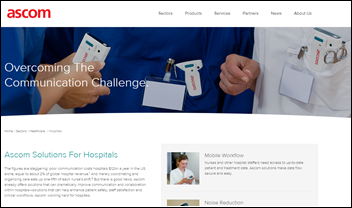










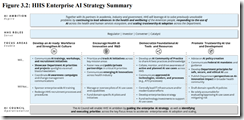
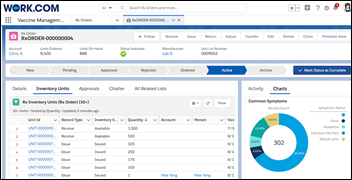











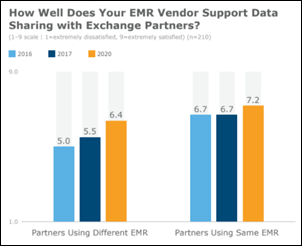













































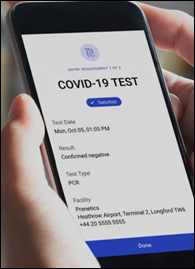
































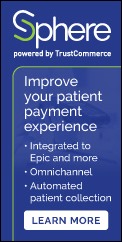





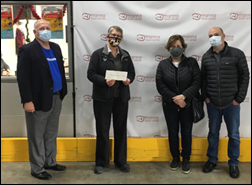






















































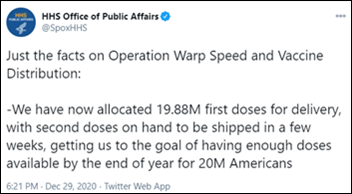























I dont think anything will change until Dr Jayne and others take my approach of naming names, including how much…